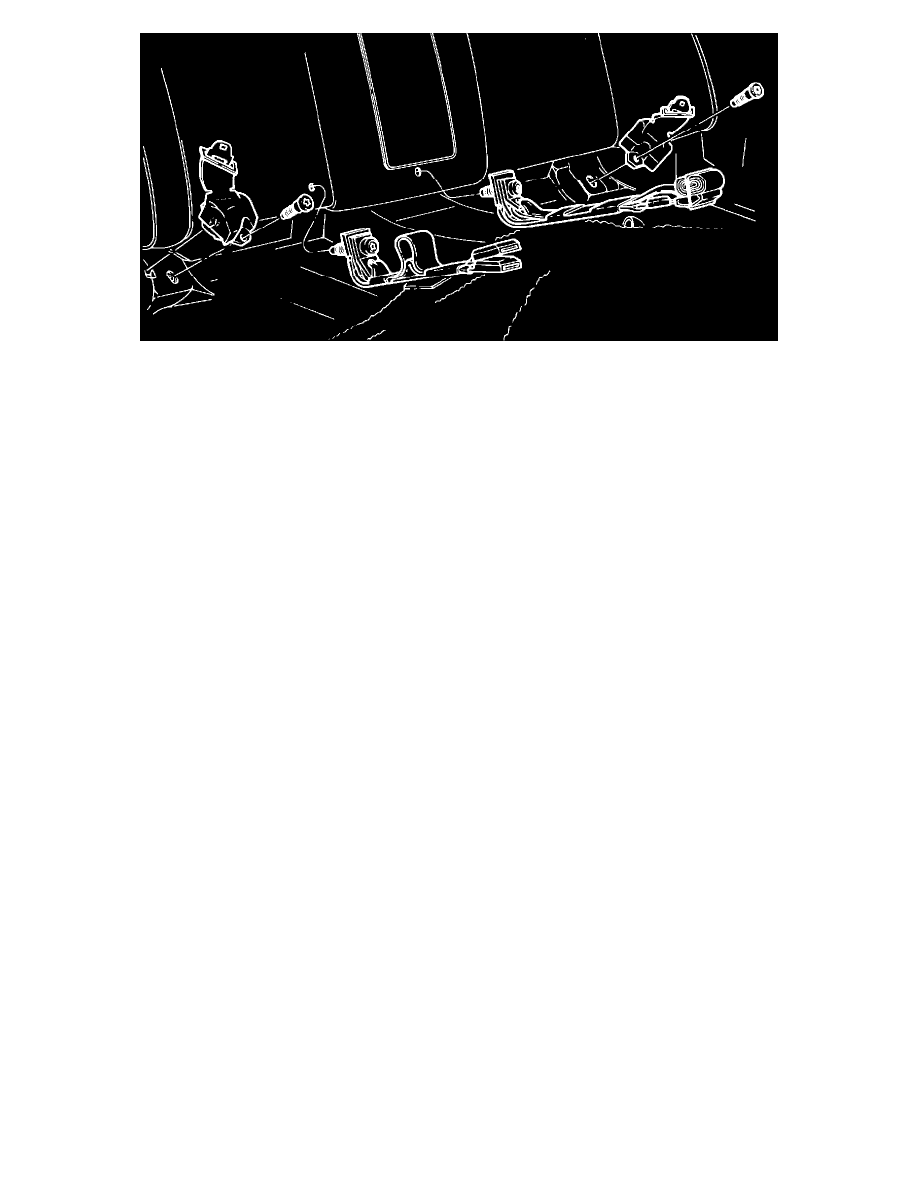Bronco L6-300 4.9L VIN Y 1-bbl (1983)

Figure 7
In passenger cars and light trucks, the rear seat two-point lap belt system for outboard passengers has the
retractor located in the quarter panel or attached to the floor under the seat (Figure 7). On Econoline, Club
Wagon, Bronco and Bronco II vehicles, the rear seat retractors are attached to the seat frame or the floor. The
buckle portions of the seat belt are all attached to the floor on passenger cars, and either to the floor or seat frame
on Broncos and Econolines. Most rear seat lap belt retractor assemblies are equipped with a sleeve to prevent
the tongue from being lost between the seat cushion and seat back. The buckle ends pass between the seat
cushion and seat back. On passenger cars, the locking together of the tongue and buckle can be made by a single
continuous movement. On Bronco and Econoline vehicles, the outboard buckle ends pass around the outside of
the rear seat (Figure 6, View B).
Section 3-Functional Test Procedure For Shoulder Harness
Shoulder Harness Functional Test Procedure for Three-Point Systems
(Both Dual Retractor and Continuous Loop Systems)
Driver should buckle up and proceed to a test area appropriate for making sudden stops. If the RH passenger seat
belt must be tested, a passenger should be buckled into the RH seat. The passenger belt may be tested utilizing a driver only, providing the driver has the
ability to grasp the RH shoulder belt and extend it approximately (660 mm) 26 inches with no compromise to safe driving. This method applies to the (8
km/h) 5 mph test only.
NOTE:
The RH shoulder belt should not be extended during testing. This avoids the possibility of a false lock-up that is caused by a fully extended
belt.
After reaching an area to safely perform sudden stops, the driver should attain a speed of approximately (8 km/h) 5 mph. The driver should inform the
passenger (if any), that he is preparing to make a brake application. At this time, both driver and passenger should prepare to lean slightly forward at the
moment the brake application is made.
The driver should make a moderately hard brake application (approximately l6 ft./sec.) without tire skid. The brake application should be on dry
concrete or equivalent hard road surface (never on a wet or gravel road). The driver and passenger should lean forward slightly into the shoulder harness;
at this instant, the belt retractor should lock-up without webbing payout.
If there is a retractor lock-up on both driver and passenger shoulder straps, the seat belt assemblies are functioning properly. Should either or both
retractors fail to lock-up at the (8 km/h) 5 mph speed, the test should be repeated at a constant (24 km/h) 15 mph. (This test must be performed with a
RH passenger if the RH belt is to be tested.)
If either or both shoulder belt assemblies do not lock-up at the (24 km/h) 15 mph test, the vehicle is to be returned for removal and replacement of the
seat belt assembly, then retest.
WARNING:
WHEN REPLACING A SEAT BELT ASSEMBLY, BE SURE TO INSTALL A COMPLETE NEW ASSEMBLY (BUCKLE
PORTION AND TONGUE PORTION TOGETHER) AS RECEIVED FROM FORD MOTOR COMPANY. DO NOT REPLACE ONE
PART OF A SEAT BELT ASSEMBLY WITHOUT INSTALLING THE ENTIRE SEAT BELT ASSEMBLY. THIS WILL ASSURE
THAT THE BUCKLE PORTION IS MANUFACTURED BY THE SAME MANUFACTURER AS THE TONGUE PORTION AND IS
COMPATIBLE WITH IT. ALSO BE SURE THAT THE BELTS INSTALLED ARE INTENDED SPECIFICALLY FOR THE
VEHICLE IN WHICH THEY ARE BEING INSTALLED.
